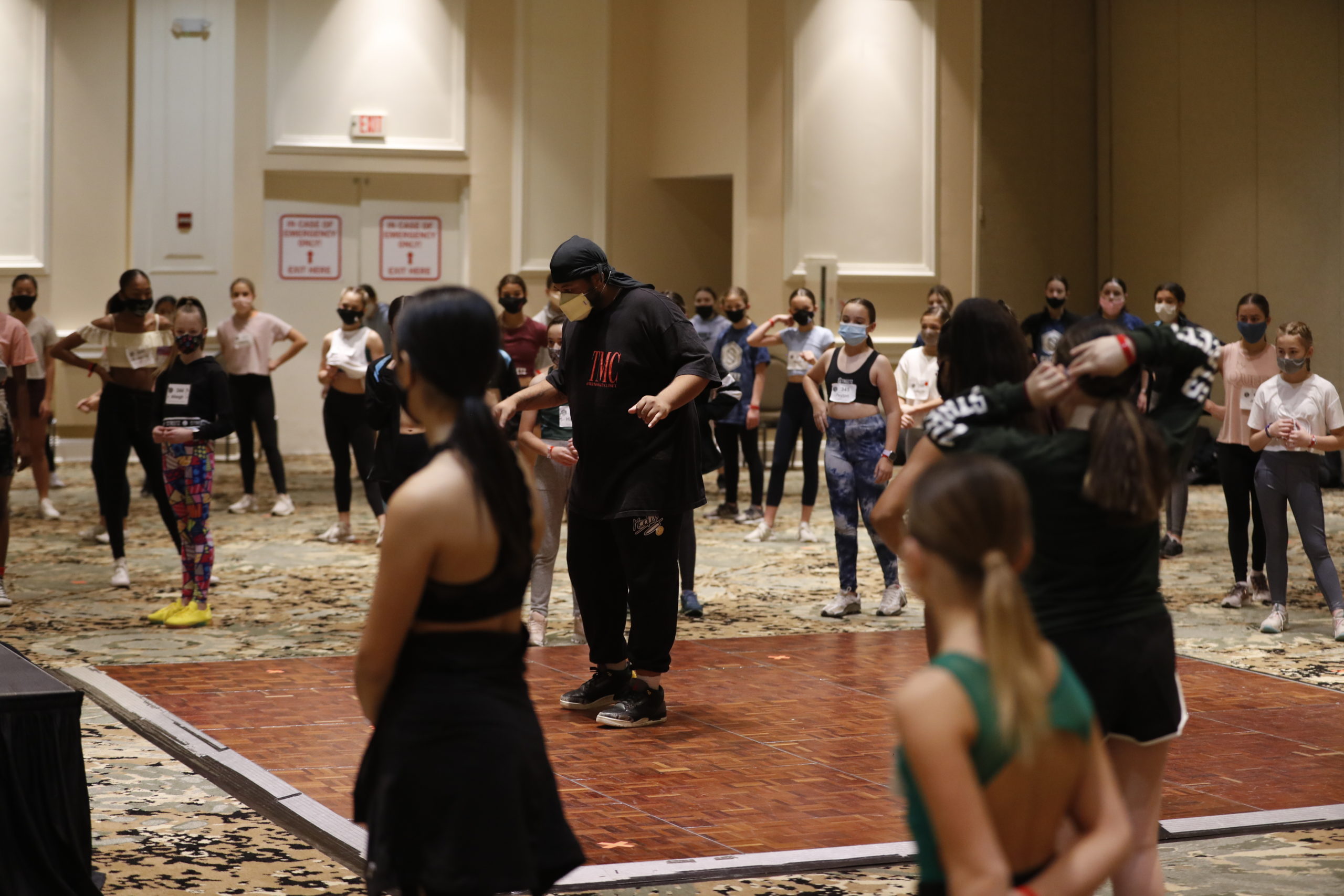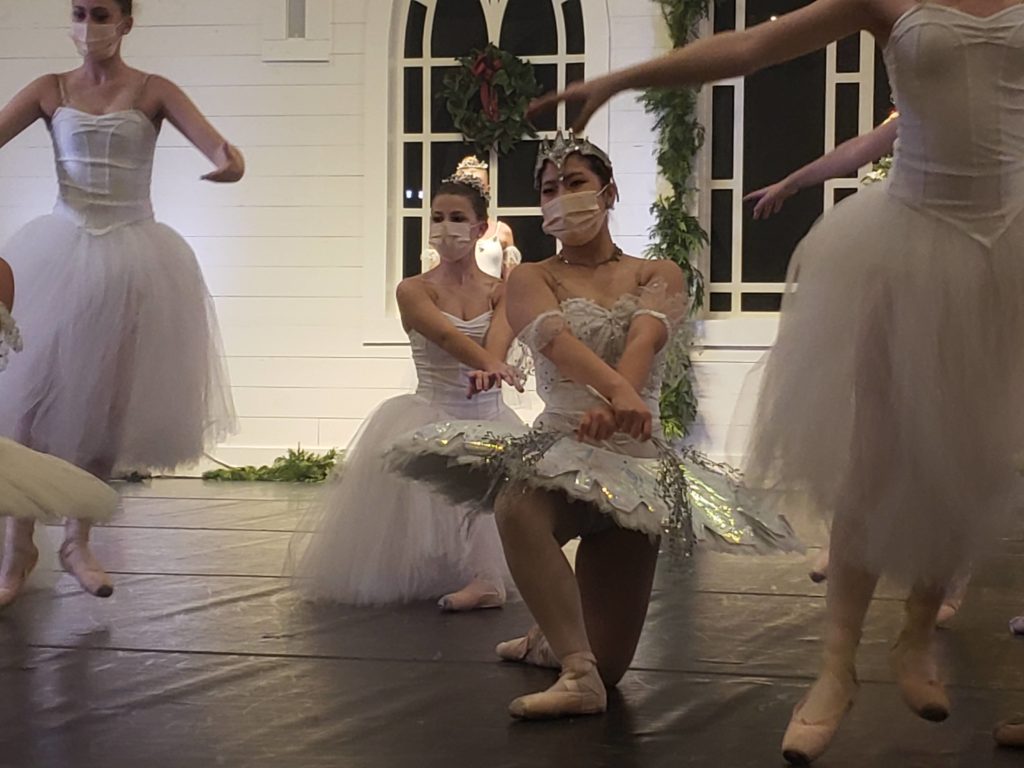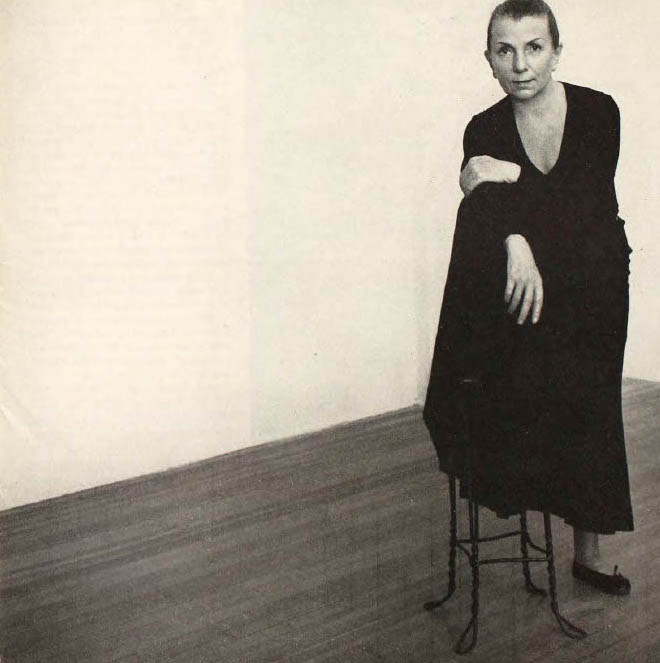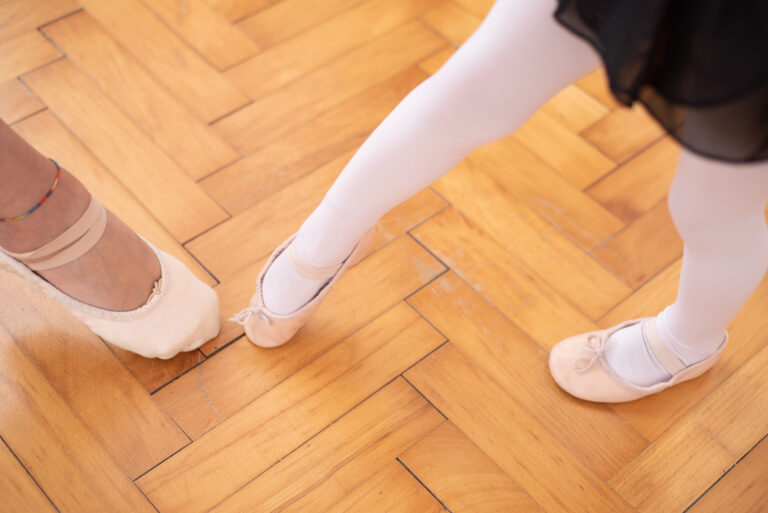
With competition season ramping up, recitals just around the corner and summer intensives not far behind, many students are getting back to performing, some for the first time since the start of the pandemic. This means that in addition to the usual pre-performance jitters, they may now also be contending with the logistics of wearing masks onstage. Given the physical exertion and emotional expression required in dance, this is no easy feat.
We spoke with three veteran teachers to get their advice on helping students perform their best while doing their part to reduce the transmission of COVID-19.
Go Back to (Ballet) Basics
For Julia Dzubinski, who teaches ballet at the Austin-based Dancers Workshop, preparing students for a new reality takes a page out of ballet history: specifically the art of pantomime. She co-directs the studio’s Ovation Ballet Company with Kristi Stere; they have always incorporated pantomime into their training and found the need to lean on it even more during the pandemic. Together, they coach students in storytelling, using not just facial expressions (which can be somewhat obscured by wearing a mask) but gestures, as well. “It was so much fun, especially with the young ones,” Dzubinski says.

Stere printed out sheets for the students to explain the meanings of specific gestures. Then, dancers would work in small groups to act out an assigned storyline through pantomime. “We would film it, have the kids sit down and watch, and then ask them, ‘Do you see how you can tell what story they’re trying to tell? There’s no talking, no smiling—nothing going on under that mask—but we can still tell that this is a story about a princess and three bears.”
Expand Students’ Facial Expressions
Kyle Tanguay, who teaches musical theater and contemporary at Bravo Dance Center in Warminster, PA, and hip hop and jazz at ZZ Dance in Cherry Hill, NJ, drew upon an improvisation exercise he learned as a student at Philadelphia’s University of the Arts to help prepare dancers for a masked competition season. “We would stand very close to the mirror, make eye contact with ourselves and explore really obscure, ‘out there’ facial expressions.”
Tanguay says that in his previous work, he rarely used his eyes for anything beyond “smeyesing” (smiling with one’s eyes), but while wearing a mask alongside his students he retrained himself, likening the emphasis on exaggeration to a yoga sequence where one might arch the back all the way, then contract, and then return to a neutral position with newfound awareness of one’s range of motion. “It was very awkward, and we had to go through the exercises several times to get the giggles out,” but eventually the guided improvisation helped Tanguay’s students find an emotional range beyond typical competition smiles.
Emphasize the Importance of Breathing
Justin Streeter, who teaches hip hop and contemporary for Streetz Dance Convention and Competition, sees mask wearing as an opportunity to fix an age-old problem. “A lot of students don’t breathe when they dance,” he explains, “and this is the most basic thing! You have to breathe or you’re gonna pass out. Wearing a mask just heightens this. There’s no choice.” His mask of choice is made by Henry Mask Co., and features an origami-inspired design that, according to Streeter, means it stays off his mouth and makes it easier to breathe when he’s teaching.
When faced with students struggling to breathe in their masks, Dzubinski encourages them to take breaks as needed: to step outside, to remove their masks for a minute or two and catch their breath, to splash some water on their faces, and to make sure that they are communicating these needs to their teachers and advocating for themselves. Her studio keeps disposable masks on hand for students who may need to swap out their cloth masks, which are generally thicker and can become too sweaty.
Look on the Bright Side
Streeter encourages students not to worry if they can’t convey their usual emotions from behind a mask. “If you feel you’re really performing and not getting enough feedback, take it up a notch! We’re used to connecting with just our face as humans because we’ve gotten lazy. What about the energy through your arms, your chest, your port de bras?”
While mask wearing is far from ideal for performing artists, Streeter observes how it has helped students to learn to look up instead of down, and to really project. “Instead of taking away from their performing, having a mask on means they have to connect with their eyes, pull up and really commit.”

Both Tanguay and Dzubinski were amazed to find themselves relying more on body language than they ever have before in their teaching. “It was such a surprise,” Tanguay notes. “I’m huge on facial expressions, but as dancers, really we communicate with our bodies all day!”
For Streeter, it comes down to the very essence of dance, especially hip hop: “This year has taken us back to the basics with everything. Hip hop is conversational, so make those sentences with your whole body, not just your face.”




